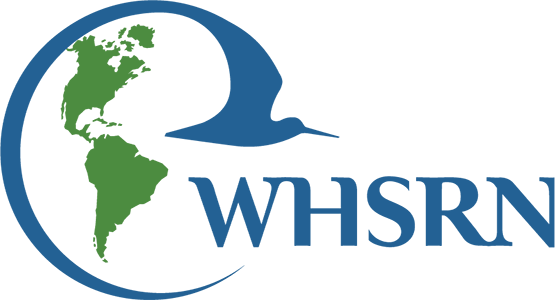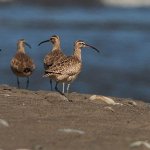Charleston, South Carolina (USA) — Last week, conservation partners and community members gathered to celebrate a major milestone for shorebird conservation: the formal recognition of Deveaux Bank as a Site of International Importance in the Western Hemisphere Shorebird Reserve Network (WHSRN). While the designation was officially approved in late 2024, the celebration held near the island brought well-deserved attention to its vital role in safeguarding declining migratory shorebirds.
Deveaux Bank, a critical estuarine island off South Carolina’s coast, supports over 25% of the entire North American population of Whimbrels—a stunning figure that helped secure its WHSRN status. In fact, in 2019, researchers discovered Deveaux Bank is the world’s largest known roost site for Whimbrels, supporting nearly 20,000 birds—half of the entire East Coast population. The island also supports one of the largest roosts in the Southeast for the federally threatened Red Knot, another migratory shorebird facing steep population declines.
The celebration event featured officials from the South Carolina Department of Natural Resources (SCDNR), representatives from Manomet Conservation Sciences, scientists from the University of Massachusetts-Amherst, and engaged community members. Guests viewed a powerful roost ecology video from the Cornell Lab of Ornithology and learned about the cutting-edge tracking research by Maina Handmaker of the Senner lab, to better understand and protect these long-distance migrants.
As Abby Sterling, conservation biologist with Manomet, explained, Deveaux Bank’s designation is “a story of hope and of doing better. It’s about discovering and protecting key links in a hemispheric network of migratory bird habitats.” She praised the passion and persistence of Felicia Sanders and her team at SCDNR, whose work uncovered the staggering number of Whimbrels relying on the site during spring migration.
“On top of its ecological importance, Deveaux Bank holds great significance and pride for SCDNR, local South Carolinians, and the greater Southeast US. This designation further strengthens our dedication to the protection of the property and the shorebirds that depend on it for survival.” -Felicia Sanders
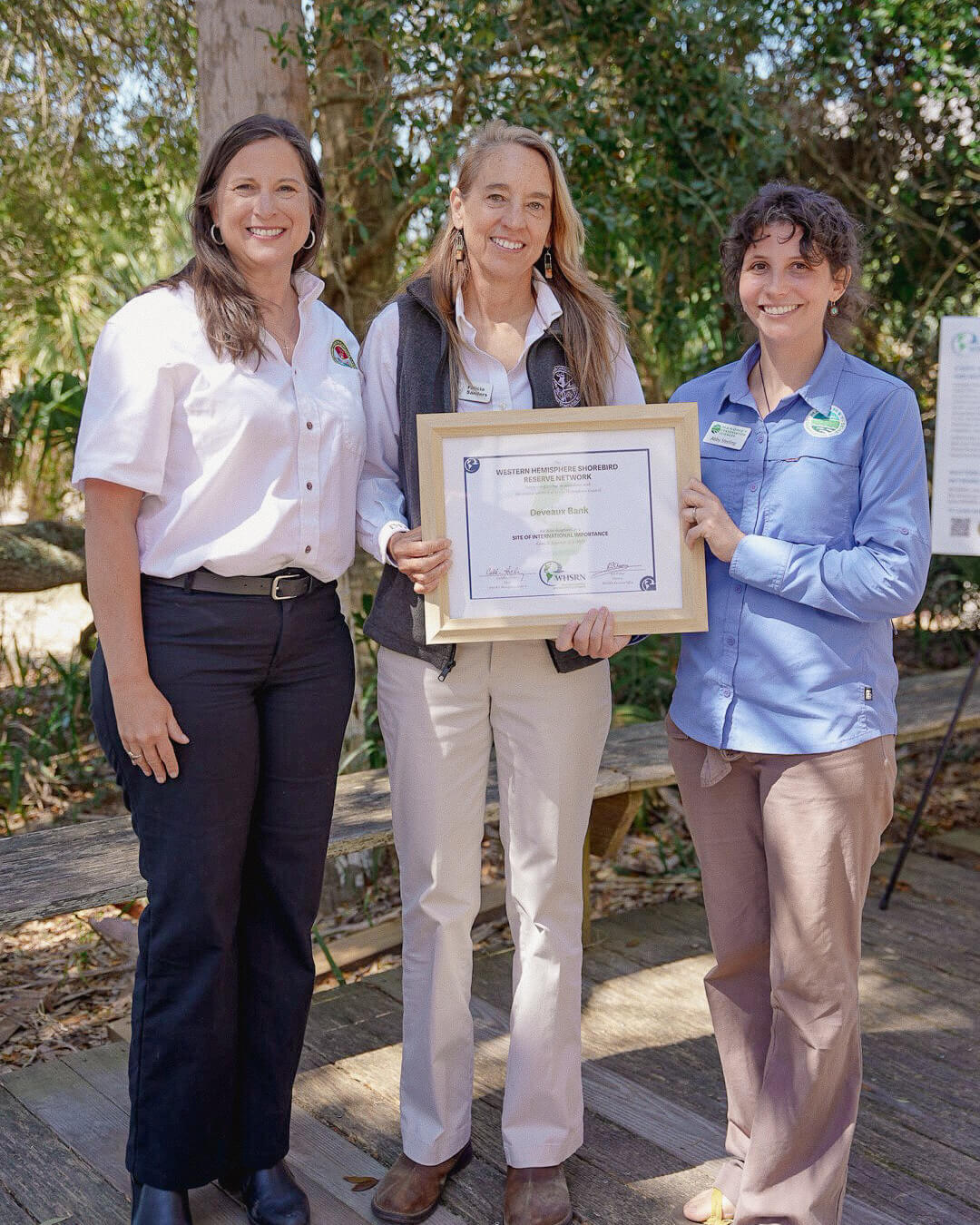
From left to right: Emily Cope, Deputy Director at South Carolina Department of Natural Resources (SCDNR), Felicia Sanders, SCDNR Wildlife Biologist, and Dr. Abby Sterling, Manomet’s Georgia Bight Shorebird Conservation Director, posing with the designation certificate.
The Whimbrel is a type of curlew—a group of large-bodied shorebirds recognized by their distinct down-curved bills. Globally, there are eight curlew species, and all of them are experiencing population declines. Along the Atlantic Flyway, the Whimbrel is one of only two remaining curlew species. The other, the Long-billed Curlew, is so rare along the East Coast that sightings are exceptionally uncommon. And then, there is a haunting reminder of what’s at stake: the Eskimo Curlew, once abundant across the continent, is now extinct—a victim of overhunting and habitat loss. Once a familiar sight on the East Coast, the Eskimo Curlew is now a ghost species, a cautionary tale of how quickly abundance can vanish.
Deveaux Bank’s conservation is a crucial piece of the puzzle—and its future just got a little more secure.
On March 14, 2025, the South Carolina legislature officially approved a regulatory change that closes Deveaux Bank to public access annually from March 15 to October 15, protecting birds during their most vulnerable nesting and migration periods. The new rule builds on a successful temporary closure last spring, when SCDNR restricted access during peak breeding season due to rising threats from human disturbance.
Located at the mouth of the North Edisto River in Charleston County, Deveaux Bank Seabird Sanctuary encompasses approximately 215 acres. The size of this sanctuary varies, and it may sometimes disappear entirely. The location of Deveaux Bank as an estuarine island was documented on historical maps as early as the 1700s, and it was documented as a seabird rookery in the 1930s. Deveaux Bank is part of a dynamic system; it completely subsided in 1980 due to erosion from Hurricane David and then slowly reemerged to provide a seabird nesting habitat again in 1987.
This is a sensible, science-based solution that balances recreation with the urgent needs of wildlife. Thanks to this regulation, birds can now nest and rest a little easier—this season and for years to come.
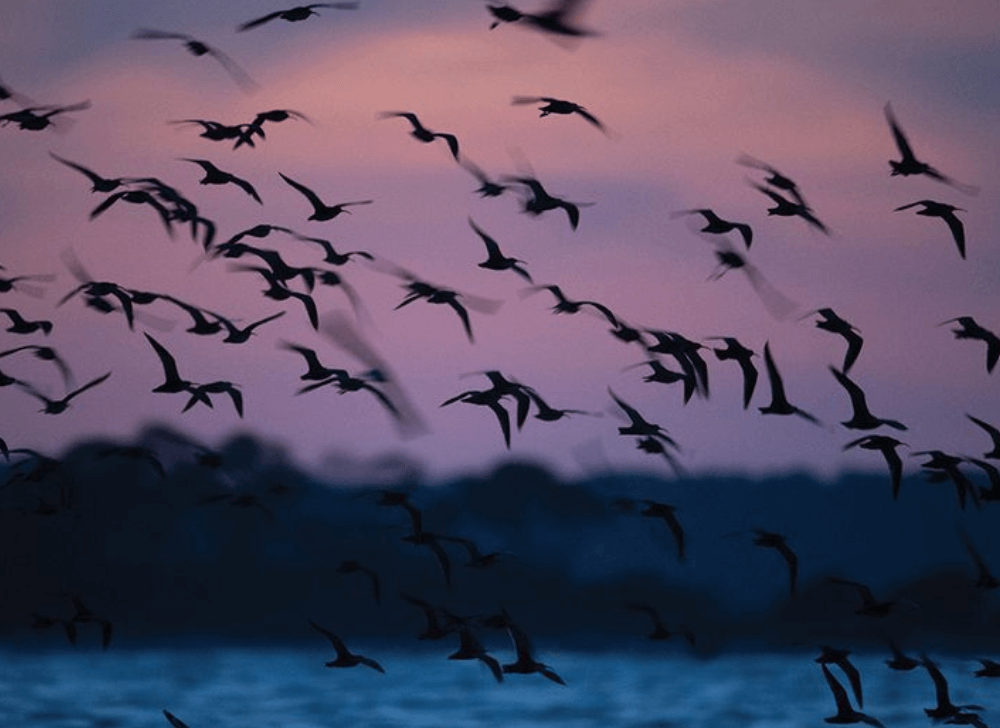
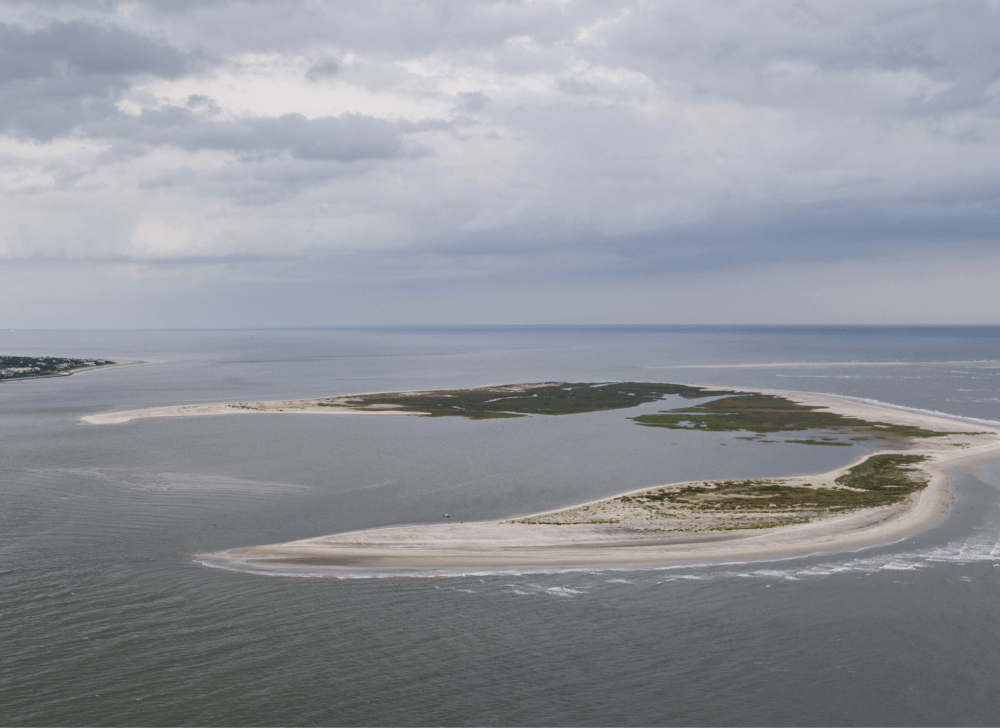
Left: Whimbrel in flight at golden hour, captured at dusk as day slips into night. Right: Aerial view of Deveaux Bank. Photos: Andy Johnson/Cornell Lab of Ornithology.
Photos: South Carolina Department of Natural Resources
Deveaux Bank became the 124th site in the WHSRN, joining a growing network of conservation areas spanning nearly 40 million acres across the Americas. With this new designation and regulatory protection in place, Deveaux is poised to remain a haven for shorebirds navigating thousands of miles along the Atlantic Flyway.
“This is a moment to celebrate an unparalleled place,” Sterling concluded. “A place that now connects South Carolina to communities across the hemisphere—and stands as a model for how local action can fuel global conservation.”
Cover Photo: © Damon Winter/The New York Times



